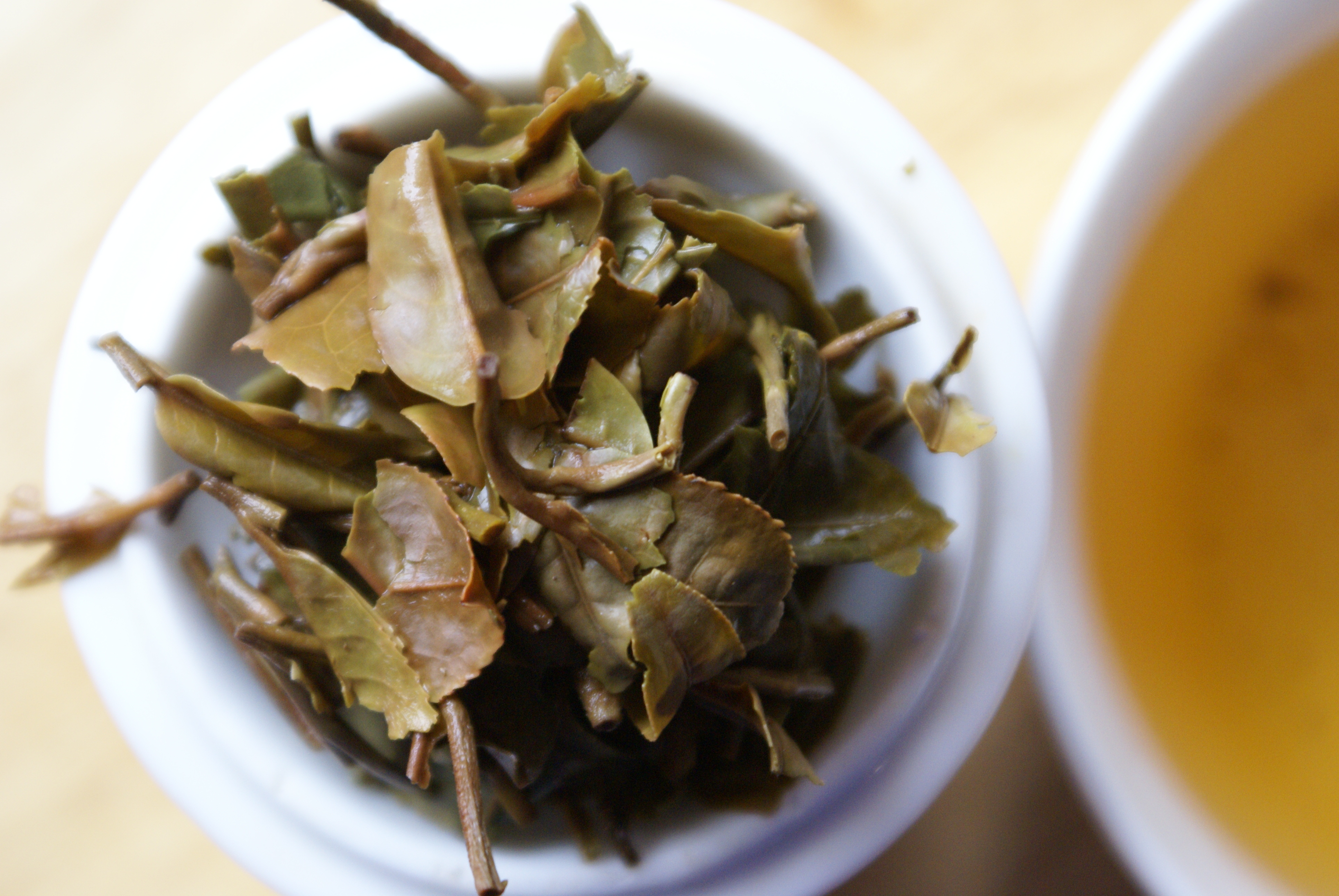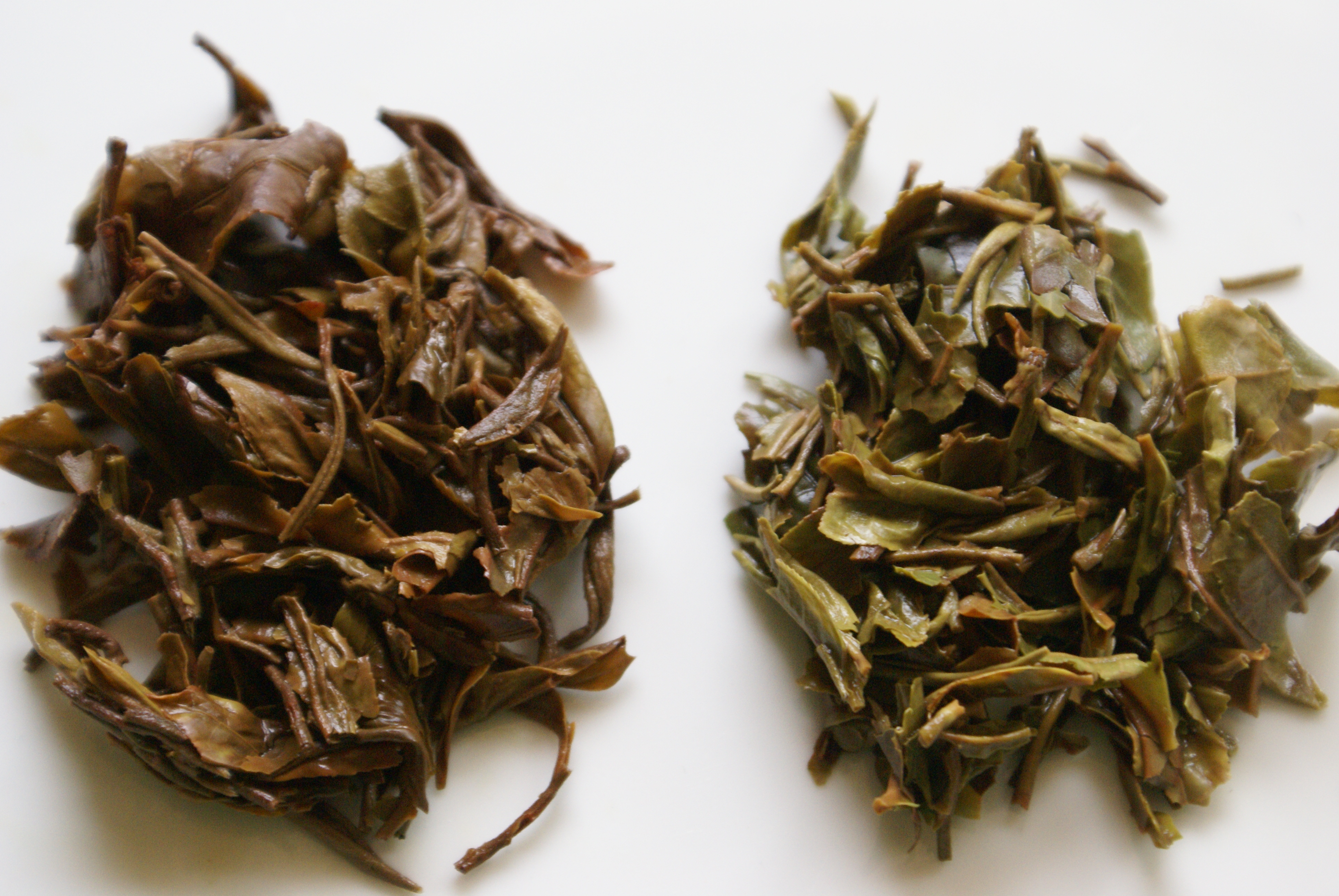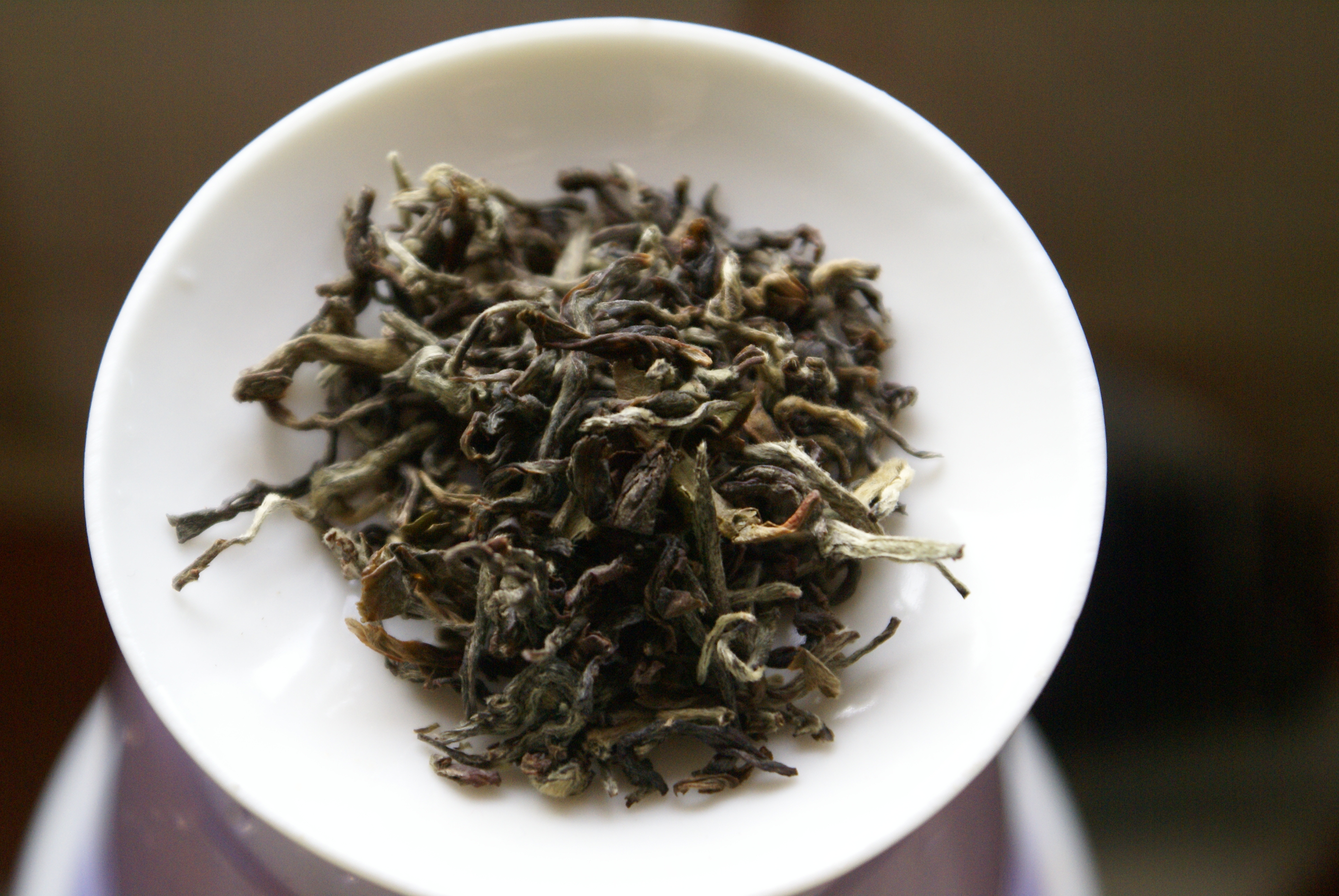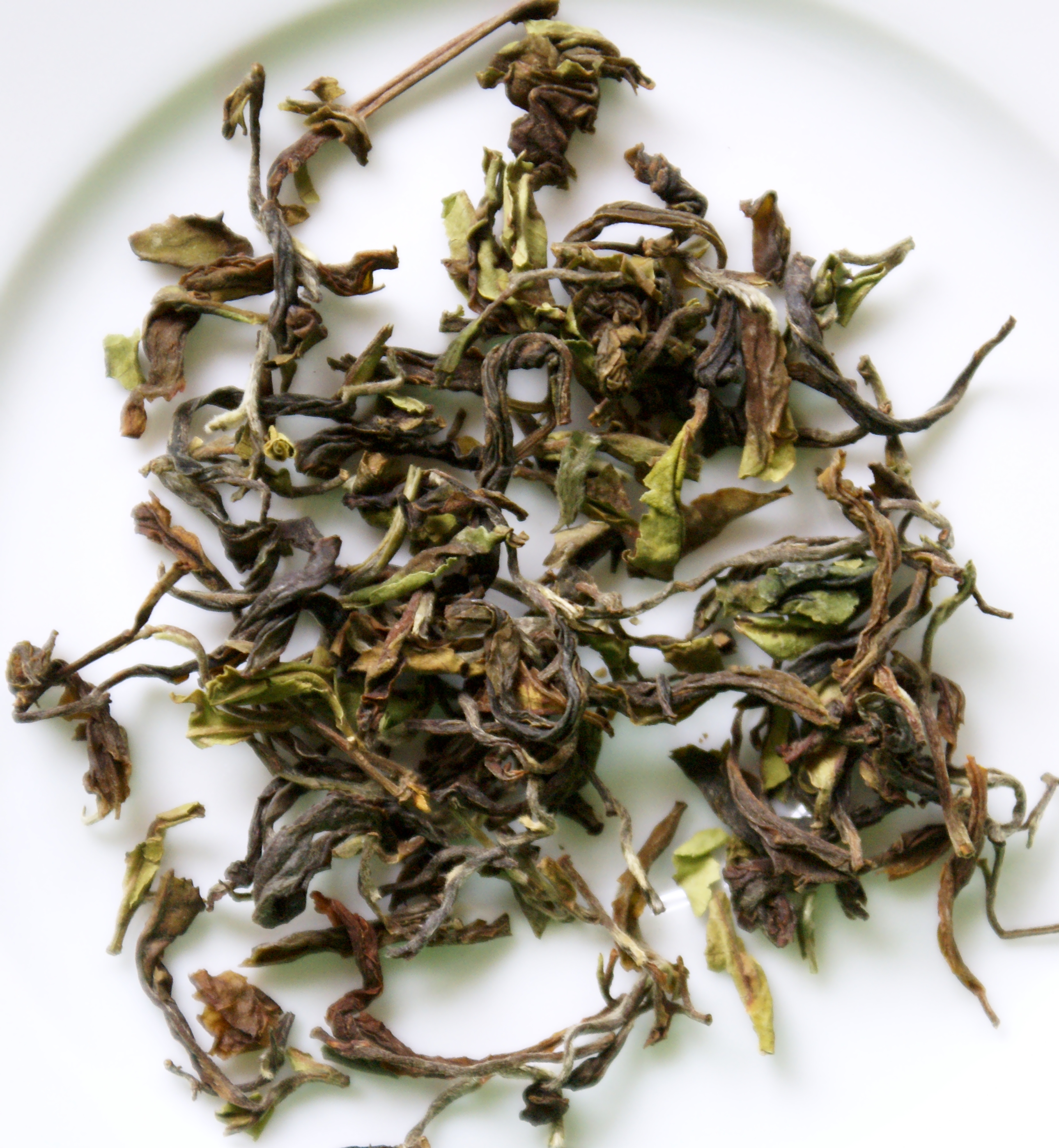2011 1st flush Darjeeling (cont’d)
Posted on 22 June 2011
After my review of the 2011 Risheehat Exotic Spring tea, here’s my look at eight other teas from Thunderbolt Tea’s sampler pack of this year’s first flush Darjeeling. I infused all of them in two flights, competition brewing (2g of leaf for 100ml for 5 minutes). (I later retried them all in my favourite Darjeeling way: 4-5g of leaf in a large 300ml glass pot with brief infusions but the results were pretty consistent).
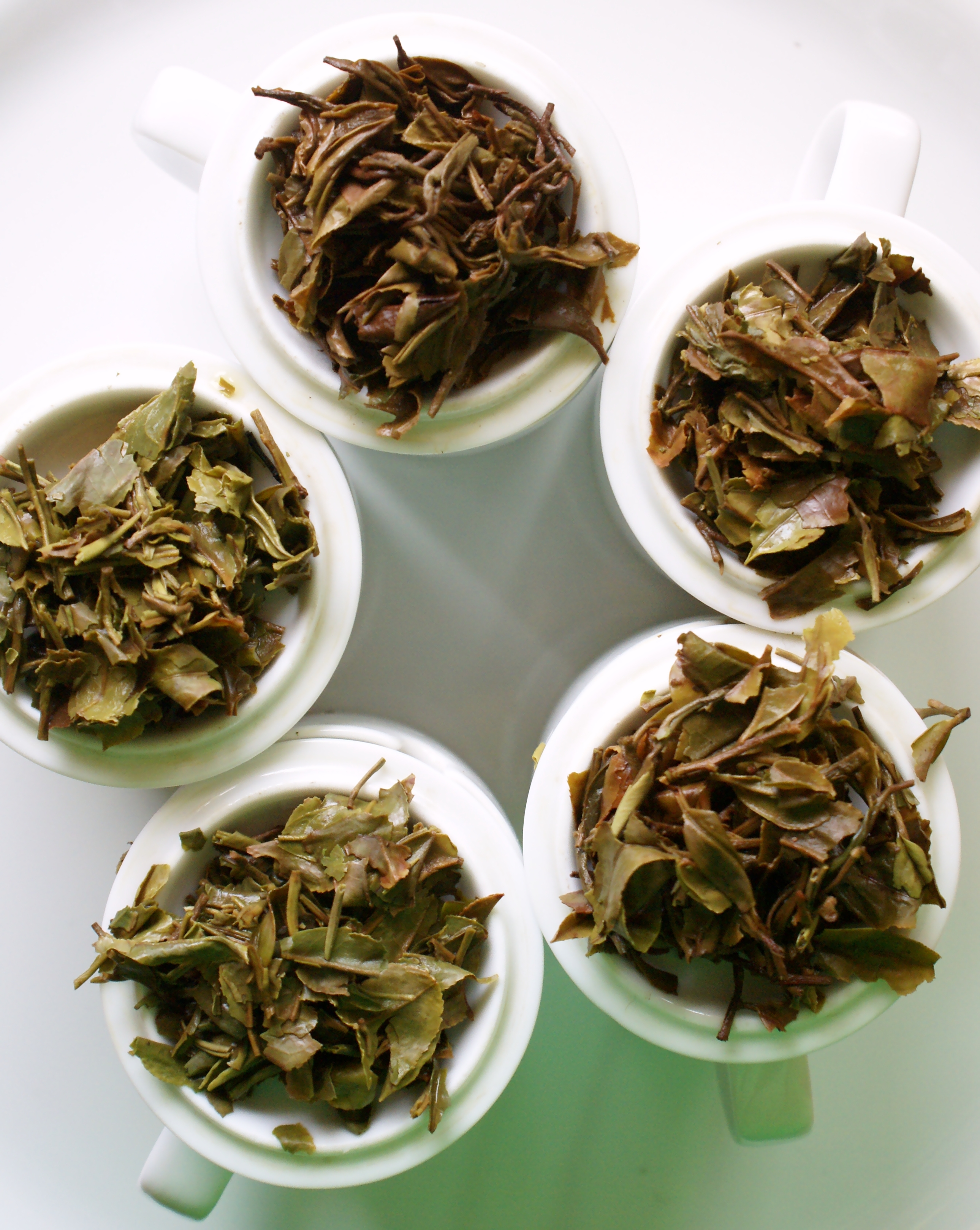
Clockwise from top: Arya Ruby, Arya SFTGFOP1, Castleton Moonlight, Risheehat Exotic Spring, Risheehat Vintage Spring.
Two teas from Giddapahar confirmed the high standing of this estate and its elegant, crisp style. The SFTGFOP1 Classic Delight [DJ6] has nice large leaves and plenty of tips; the infused tea is light-coloured and light-bodied, with a mild taste and a slight peppery counterpoint. A representative first flush and excellent value at ($17 / 100g). The SFTGFOP1 Clonal Fine [Ex2] is a bit more oxidised and substantial; it has an interesting almondy, grapey profile that almost makes you think of second flush-typical ‘muscatel’. Although grippy and deep, this is still an elegant and juicy tea – recommended.
Two samples – China Classic Superfine [DJ24] and Clonal Classic Superfine [Ex1] from Singbulli confirmed my rather lukewarm feelings about this tea garden. They’re certainly not bad: full-flavoured and wholesome but somehow lacking that extra character and sprite I look for in Darjeeling. Consistently with my earlier impressions they’re a bit more oxidised than the current Darjeeling average, though the Clonal Superfine showed that elusive soft almondy elegance of first flush. I prefer these teas with a shorter infusion (less than 2 minutes) to tame the tannins.
In contrast, the Risheehat Exotic Spring [DJ33] was the lightest of these nine teas (full review here), and I can say pretty much the same about the Vintage Spring [DJ32] although it’s a slightly more oxisided tea, surprisingly for coming from China bushes (which I usually find giving a lighter tea than clonal trees). The Vintage Spring is a bit one-dimensional and forgettable while the Exotic Spring is a definite re-buy even at the high price of $30 / 100g.
It was a good surprise to find two teas from Arya Estate in the sampler pack, and I looked forward to tasting them, given Arya’s high profile and my good experience with them. The SFTGFOP1 Premium [DJ12] is a solid tea, but perhaps not so emotional: black-teaish, peppery, dried-herby with some reasonable depth; my notes are actually consistent with a similar graded tea from autumn 2009. The Arya Ruby [Ex6] is a different, and strange, animal. It’s a whole-leaf tea that looks positively hand-processed, well-sorted and exciting to look at. Whole-leaf Darjeeling tends to be lighter than more modest grades, as fewer tannins and colour are released than from fragmented leaf. Here, it’s different: the tea has strong oxidation and the profile veers toward chocolate, earth, roasted coffee, toasted nuts, and other notes you don’t normally associate with spring Darj. Apparently it’s the distinctive style of this special tea ‘cuvée’, and although it’s not my favourite style, I can see why people like it: it’s interesting and balanced and actually fairly priced at $26.
I can say the same, or more of the same, about the Castleton Moonlight [Ex4] (not included in Thunderbolt’s sampler pack; I ordered a 100g pack separately). It’s another hand-processed whole-leaf tea of the type I’d like to see more in Darjeeling: I feel it’s where the real qualitative interest lies, and I don’t mind paying the extra price it costs to produce. The price is actually relatively affordable: $27. Castleton aren’t really renowned for first flush tea and I’ve not been overwhelmed by the 2010 edition of this (see review) but the 2011 is obviously a good effort, and probably the most interesting tea of those I tried here (perhaps with the Risheehat Exotic). As usual with Castleton the oxidation is not so low, but the whole is elegant nonetheless. I don’t really understand why this Moonlight is 30% cheaper than the Singbulli Clonal Classic: it looks better and tastes better.
I went through a similar number of first flush Darjeelings at the same time last year. It’s risky to generalise based on a limited sample such as this, but my impression is that 2011s on the whole are less fresh and airy than 2010s. They are showing chunkier, earthier and more peppery, and I haven’t found a tea that would match last year’s Puttabong Queen for citrusy juiciness and lightness. Apparently the 2011 vintage was a good one for Darjeeling: reports are of good regular rainfall through February, but there also has been drought in some sub-areas, and the February embargo did delay shipping of the early spring teas. I think it’s slightly showing in the cup.
You can read extended and well-written vendor descriptions as well as see some excellent close-ups of the dry and wet leaves on the Thunderbolt website. Most of the teas I reviewed are still available for purchase.
Disclosure
Source of teas: own purchase.


